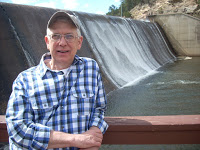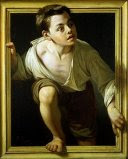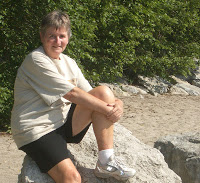The hit song from old Blue Eyes made a new impression on me the first time I heard it played at a gay bar. That night at the Bailey Street Where House the song caught my attention due to its stylistic contrast with several disco songs played, pieces by the Village People, Bee Gees, and Donna Sommers. In the context of a gay bar, the song seemed an anthem or hymn of those gathered. I duly noted its inclusion as one among many indications of community for the qualitative research project I was pursuing in a course “Community Contexts of Ministry.” In this way my theological education at Texas Christian University’s Brite Divinity School brought me closer to the gay world and to my eventual inclusion within that community.
I had chosen the gay bar setting from a suggestion list, noting at the time that one other person had indicated his intention to do the same, a guy I had recently met at a gathering sponsored by the Christian Church (Disciples of Christ) in the Southwest. Four seminarians went that evening to observe and, of course, to drink a few beers. I got my hazel eyes full of interesting sights, signs of community as I interpreted them in my field observation report, and my ears full of other indicators that something fine and interesting was going on in this bar. I made several return trips that semester and learned things I wanted to know about gay life and, furthermore, came away with the impression that while my friend seemed defended against what the place represented, he also seemed comfortable and interested. I had no plan for his and my interests to converge at a personal level but was acutely aware of the attraction of gay community I observed there and my own comfort within the setting.
That semester I also observed a community organizing project and reported it with the same fascination and detail as I did in my description of the gay bar. I didn’t feel like I had to cover myself. I already knew my interest in men, my feelings of sexual attraction to some men. I was fine with the feelings. My life was headed in a family and career direction that I was not going to forsake. But like a cat, I tend to be interested in what is going on around me. I’m curious and entertained by happenings in my peripheral vision, especially if they seem novel. Seeing lots of guys dancing together in a bar certainly was novel and having the luxury of a plausible excuse for watching the show let me feel its deep fascination. The date: fall 1978, before the AIDS crisis, a time of nearly unbridled passion that was easy to see revealed in that bar. I saw and liked it, but I saw more.
I was watching the world in which my good gay friend Ted lived. He too, had a career in music and church but lived single. I knew he was sexually promiscuous. His attempts to marry had ended in disasters to both the intended relationships and his mental health. I filtered my observations through what I knew of his experience. I also had my own gay feelings in a couple of developing friendships, feelings I knew I wouldn’t pursue. Still I wanted to know these things for myself: the actuality of man-to-man love and sex; the possibility of men loving and living together; the acceptance of such persons in society; and the embracing of same-sex love within a religious community.
At that point, some churches had declared homosexuals should be guaranteed equal civil rights related to the United States Constitution and to a general sense of morality. The arguments of the details were under scrutiny and becoming a dividing issue in most denominations and the larger community. I saw that churches were entering an era of anxiety when that question and others would be faced openly within congregations. Gays would expect inclusion in the local churches and would want leadership. Then there was the larger issue of relationships. Already marriage as an institution in America was showing severe weaknesses. Parental fears and warnings did little to prevent young couples in college from living together and having loads of sex without the convention and support of marriage. Free love had been a counter-cultural doctrine for over a decade. Eventually the issue of gay marriage would split the churches and become a problem for general society.
I felt I needed to know and understand. I had experienced sex with males. My closest adult male friend was gay. I was sitting in a gay bar enjoying myself. I was writing reports of my excursions. I was learning not to fear. I was hoping to learn to be an effective minister. I was evaluating myself at age thirty, in my tenth year of marriage to a loving woman. What would be ‘my way?’ I really wondered.
By the end of the semester, I had seen a lot of city life and written a short book of field observations and reflections. I’d witnessed gay bar life. I’d sat in the county hospital emergency room late on Friday nights. I’d attended quite a few meetings of a community organizing effort. My professor returned the report congratulating me on my work, both observational and written. He also warned me about the problem of writing candidly and subjectively about my experiences. “One can lose control of a written document,” he warned. His sensitivity to my personal process led me eventually to destroy the manuscript, but I didn’t lose the impressions or self-realizations that arose from the experiences. I came away from the semester with a knowledge of gay bars, but also with the perception that gay folk had lives away from bars, that they often lived in fear of police, that they had great fun together, that they sometimes partied too much, that they helped out friends in crises, that they experienced life with the same grace and awkwardness as anyone else in society. I’d gained a glimpse of a life with traditions, institutions, and history; a community of importance and, for me, appeal.
I had no idea I’d ever be meeting on a weekly basis with a group of gay storytellers in a gay community center, that I’d be going to happy hour every Friday night at local gay bars, that I’d regularly circulate with quite a few gay couples and their single friends, that I’d survive two gay lovers who died from AIDS-related causes, or that I’d live over nine years with the gay man I’m paired with now.
But these days I tell my gay story and have to conclude, that even in embracing this new gay life: “I Did It My Way.”
About the Author
Phillip Hoyle lives in Denver and spends his time writing, painting, giving massages, and socializing. His massage practice funds his other activities that keep him busy with groups of writers and artists, and folk with pains. Following thirty-two years in church work, he now focuses on creating beauty and ministering to the clients in his practice. He volunteers at The Center leading “Telling Your Story.”
Read more at Phillip’s blog artandmorebyphilhoyle.blogspot.com




